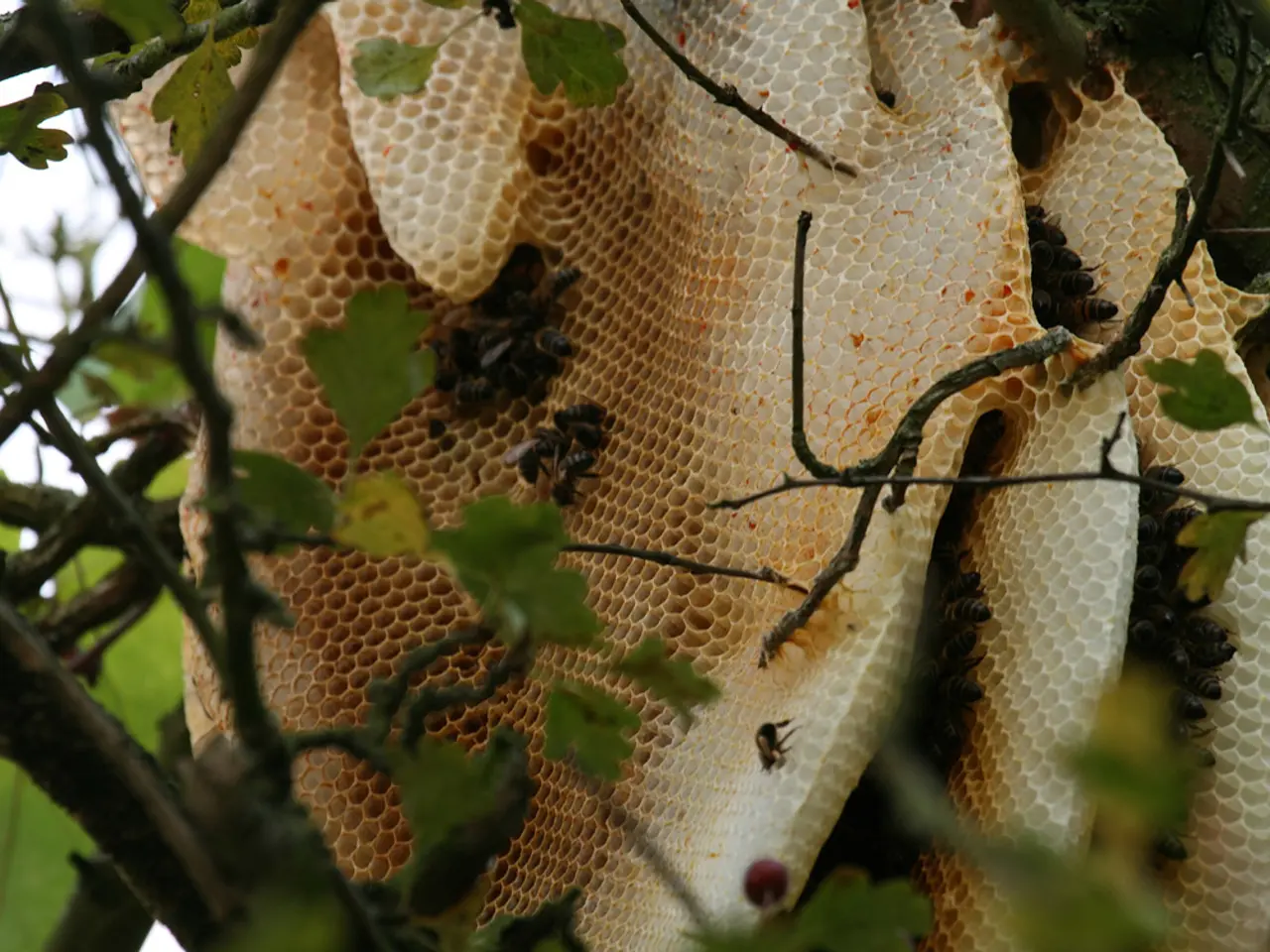Warming Earth Poses Challenges for Bees, Concerns about Their Survival Remain High among Researchers
In the heartland of America, beekeeper Isaac Barnes in Williamsport, Ohio, faces a daunting challenge as he battles parasitic mites on his hives. The high temperatures make it difficult to apply formic acid, an organic chemical used to kill mites, without risking harm to the bees. This is just one example of how climate change is impacting bee populations and agriculture.
Pollinators, including bees, play a crucial role in the health of our planet, the crops we grow, and the food we eat. However, climate change is introducing several stressors that affect their ability to pollinate crops and survive.
One such stressor is habitat loss and shifts. As species' geographic ranges change due to climate change, it alters the composition of species communities and disrupts plant-pollinator interactions. This can lead to a spatial mismatch between plants and pollinators, particularly for specialized pollinators like orchid bees.
Another stressor is phenological mismatches. Changes in temperature and precipitation patterns can cause plants to bloom earlier or later than usual, leading to mismatches with pollinators that may not be present or active at the same time.
Increased disease susceptibility is another concern. Warmer temperatures and altered ecosystems can increase the prevalence of diseases among bees, further threatening their populations.
Managed bee colonies, crucial for pollinating high-value crops like almonds and apples, are experiencing significant losses. Preliminary results from the annual U.S. Beekeeping Survey found that beekeepers lost almost 56% of their managed colonies, the highest loss since the survey started in 2010.
The declines in wild bee populations are also concerning. Climate change contributes to these declines by reducing their habitat and altering their distribution ranges, ultimately affecting the diversity and abundance of these pollinators. Specialized pollinators, such as those pollinating wild vanilla, are particularly vulnerable due to their dependence on specific plants and conditions.
Scientists are studying the effects of rising global temperatures on managed and wild bees. Some experts believe that warming temperatures may make it harder for bees to fend off diseases and gather food. Isaac Barnes supplements his hive with additional food to keep them healthy into the winter.
To mitigate these impacts, strategies such as creating pollinator gardens, implementing pesticide bans, and promoting beekeeping are being suggested. However, the Trump administration's proposed budget would eliminate the research program that funds the USGS Bee Lab, which supports the inventory, monitoring, and natural history of the nation's wild bees. If cuts are made to federal funding for bee research, it would be more difficult for scientists to study the disappearance of bees and other pollinators and improve how they prevent these losses.
Not being able to manage these pollinator deaths could cause the price of fruits, vegetables, nuts, coffee, and chocolate to jump or become scarce. Every single plant that blooms is something that the bee can use, and every single plant is affected by climate change.
Sources: [1] Nathanson, M. (2019). The Beekeeper's Lament. Beacon Press. [2] Potts, S. G., et al. (2010). The global economic value of pollination. Science, 328(5984), 1103-1105. [3] Klein, B., & Raupach, M. R. (2017). Climate change and the loss of pollinators: A global synthesis. Annual Review of Entomology, 62, 1-20. [4] National Wildlife Federation. (2019). Climate change and pollinators. Retrieved from https://www.nwf.org/Wildlife/Learn-About-Wildlife/Wildlife-Library/Pollinators/Climate-Change-and-Pollinators.aspx [5] Kremen, C., et al. (2007). Conserving bee biodiversity for effective ecosystem functioning and crop pollination. Proceedings of the National Academy of Sciences, 104(34), 13709-13714.
- In Seattle, where environmental concerns and politics intertwine, a pressing issue lies in the city's transportation and traffic, which contribute to increased carbon emissions and, consequently, climate change.
- The climate change-induced rise in temperatures in Seattle exacerbates health-and-wellness and fitness-and-exercise issues, as it intensifies smog and air pollution levels, leading to respiratory problems for its residents.
- As an attempt to mitigate climate change, scientists in the environmental science community are leveraging the power of solar energy by proposing solar-powered public transportation systems in Seattle to decrease reliance on fossil fuels.
- To preserve and promote the health of the city's pollinating insects like bees and butterflies, Seattle has initiated various programs aimed at creating pollinator gardens and restricting harmful pesticides within public spaces.
- On a global scale, the effects of climate change on pollinators and their roles in crop production extend to Seattle's food supply, raising concerns that the city will experience scarcity or price fluctuations of fruits, vegetables, nuts, coffee, and chocolate.




